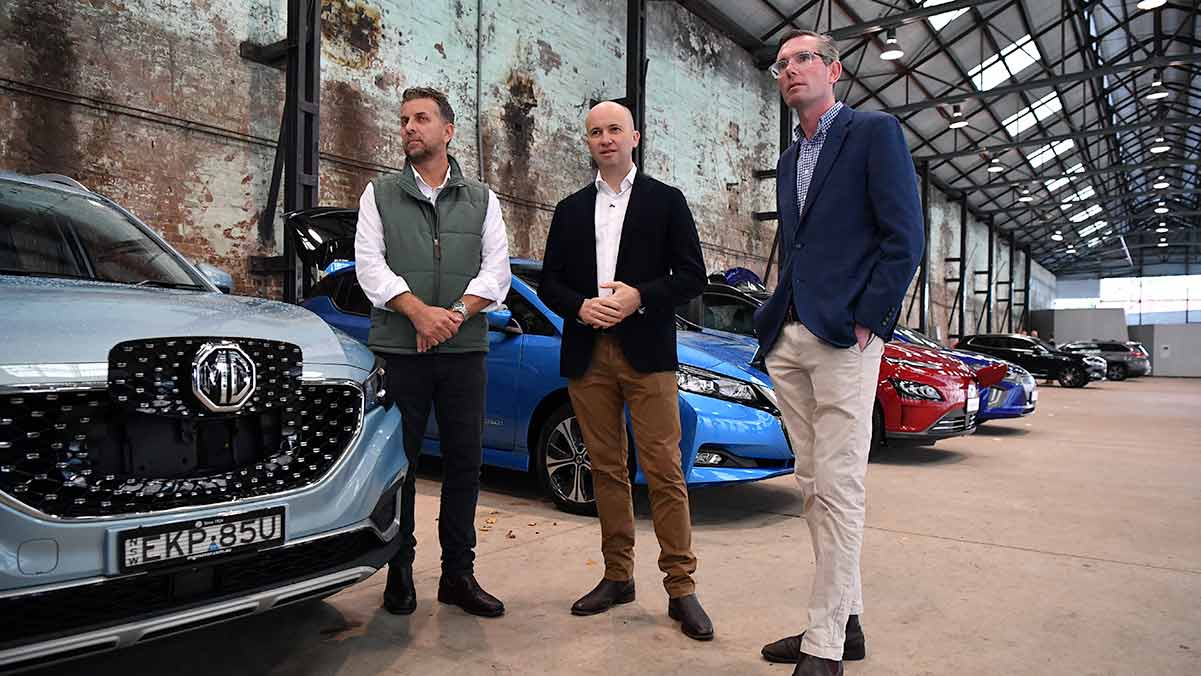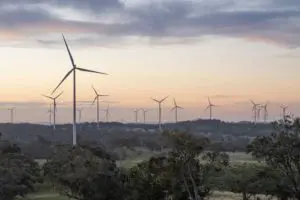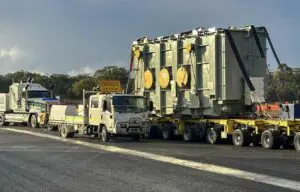As the Morrison government wages an internal war over Australia’s national climate change targets, Australia’s largest state has shown what can be achieved by a conservative government that accepts that Australia’s future economy is one powered by clean energy.
Morrison is trying to reconcile the seemingly unreconcilable split between the moderates within the Liberal Party who want a commitment to a concrete zero emissions target and Nationals MPs willing to blow up any such proposal.
As it currently stands, the Morrison government barely has a plan to meet its 2030 target, to cut emissions by between 26 and 28 per cent – with the most recent projections of Australia’s emissions showing that the government still had more to do to satisfy the target.
Well, the NSW government has delivered a plan that looks set to almost double the pace of emissions reductions compared to the national 2030 pledge – a move that will heap pressure on the Morrison government to ramp up its ambition before major international talks in a little over a month.
NSW energy minister Matt Kean made clear on Wednesday that he wanted to see prime minister Scott Morrison attend the COP26 climate talks in Glasgow – something that is not guaranteed – to demonstrate leadership on climate.
“I think the prime minister should be going to Glasgow to persuade the rest of the world to take stronger action on climate change because it is in our economic interest to do so,” Matt Kean told ABC’s News Breakfast program.
Former prime minister Malcolm Turnbull said much the same thing. “History is made by those who turn up,” he told a National Press Club event on Wednesday.
New South Wales is Australia’s most coal dependent state, with around 73 per cent of the state’s electricity being generated from the biggest fleet of black coal in the country, and coal-heavy industries in the Hunter and the Illawarra regions.
It is also responsible for around a quarter of Australia’s total greenhouse gas emissions, ranking second only to Queensland amongst the states in terms of emissions.
In the progress report published on Wednesday, the NSW government has outlined how it expects to achieve its emissions reduction cuts, including by supporting low emissions investment across a broad section of the NSW economy.
Essentially, NSW will do all of the things that the Morrison government is not.
Australia still lacks a national policy for electric vehicles, but the NSW government is aiming for more than 50 per cent of new car sales to be electric models by 2030.
This target has been backed by a $490 million EV strategy to cut the purchase cost of electric vehicles and fund the rollout of fast charging infrastructure across the state.
The state government has committed to transitioning its own fleet of vehicles to electric models, including a plan to switch over 9,000 buses to electric models – many to be manufactured locally – as part of a renewal of the Sydney public transport network
The NSW government has also rejected a federal government push to introduce new subsidies designed to delay the closure of Australia’s ageing fleet of coal fired power stations.
Instead, in recognition that it faces the closure of at least four of the state’s biggest coal generators between now and 2030, the NSW government has outlined a plan to replace them ahead of time with 12GW of clean energy projects and at least 2GW of energy storage.
The interest in these zones has been staggering, with the state government receiving many multiples more than is needed in terms of capacity and investment when seeking expressions of interest for zones being progressed to date.
The plan, which is built around the creation of dedicated renewable energy zones all centred around regional communities are expected to drive as much as $32 billion in investment in new clean energy projects, bringing new jobs, infrastructure and revenue streams into rural areas.
Rather than pouring money into problematic technologies like carbon capture and storage, the NSW government has established a $195 million clean technology innovation fund to support the decarbonisation of major industries by helping them to switch to zero emissions fuels like renewable hydrogen.
The NSW government will also seek to take on emissions in hard to abate sectors, including commitments to cut the state’s emissions from waste, setting stronger targets for energy efficiency investment and investing heavily in green hydrogen production to decarbonise the state’s steel production.
While the NSW government plan is not perfect and built into it is a planned expansion of the state’s coal extraction industries, it does show the Morrison government that it is possible to actually develop a plan to achieve significant reductions in emissions while growing the economy.
It also shows that it is possible to win the support of regional and rural constituents – including the Nationals – by including plans to bring clean energy investment into regional areas. Reaching net zero emissions isn’t going to be a detriment to regional communities. It can be an opportunity to grow.
New South Wales has shown that it is entirely possible for a government to revise and strengthen its emissions reduction targets when it realises it is on a trajectory to ‘meet and beat’ them.
The Berejiklian government had, less than two years ago, set itself a target to cut emissions by 35 per cent by 2030. Confident that it will now significantly overachieve that goal, the state government has formally adopted 50 per cent as its new target.

Meanwhile, the Morrison government has so far refused to budge from its current 2030 pledge of 26 to 28 per cent reduction, set back in 2015.
Most Australian states and territories are already aiming to achieve much larger emissions cuts than the Morrison government’s 2030 target. A rough estimate suggests Australian emissions could be cut by more than 40 per cent by 2030, driven entirely by state government ambition.
It offers the Morrison government a free-kick to increase its 2030 pledge to at least 40 per cent cut, and potentially even more if it is willing to commit to stronger policies to help support a transition to clean energy and low emissions industry.
The 50 per cent target received endorsement from former Liberal prime minister Malcolm Turnbull, who told the National Press Club on Wednesday that such a target would be “very doable”.
“There are plenty of scientists that will say it should be as high as 70 per cent,” Turnbull said. “But certainly it should be at least 50 per cent. Forty-five to 50 per cent, that is actually very doable and it’s done, essentially by an early retirement of coal fired generation.”
Federal Labor spokesperson for climate and energy, Chris Bowen, welcomed the NSW announcement, noting that federal Liberals had criticised Labor for a now abandoned policy to cut national emissions by 45 per cent by 2030.
“Now Scott Morrison, Josh Frydenberg, and Angus Taylor all said a 45% reduction would wreck the economy. Have they commented today on Gladys Berejiklian plans? No. Where are they when it comes to the New South Wales Government’s announcements? I make it clear I welcome the New South Wales Governments and I give credit where it’s due to the New South Wales Liberal Government. But States can only do so much,” Bowen said.










